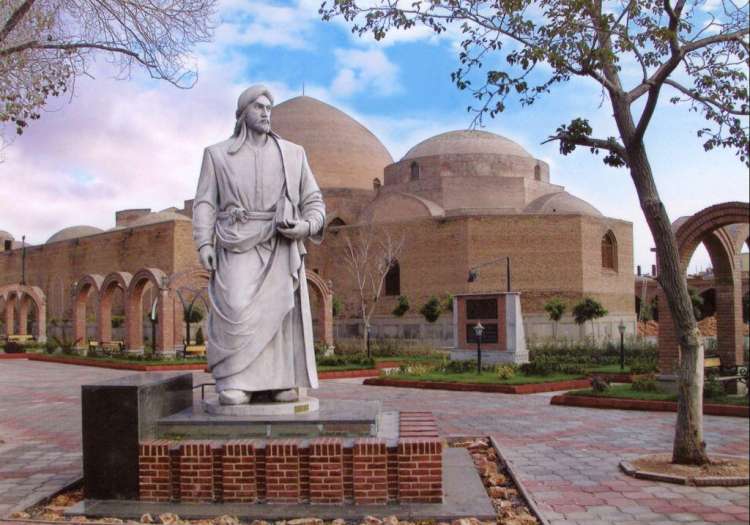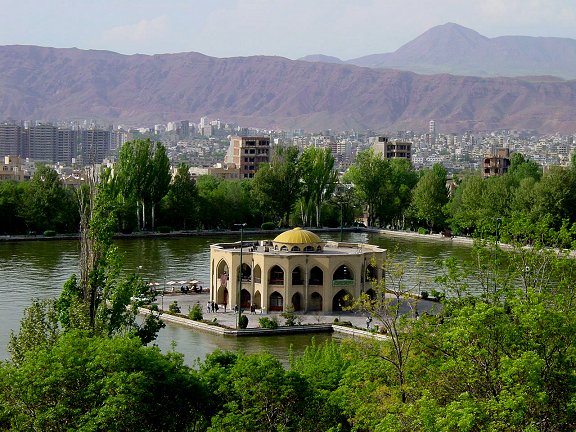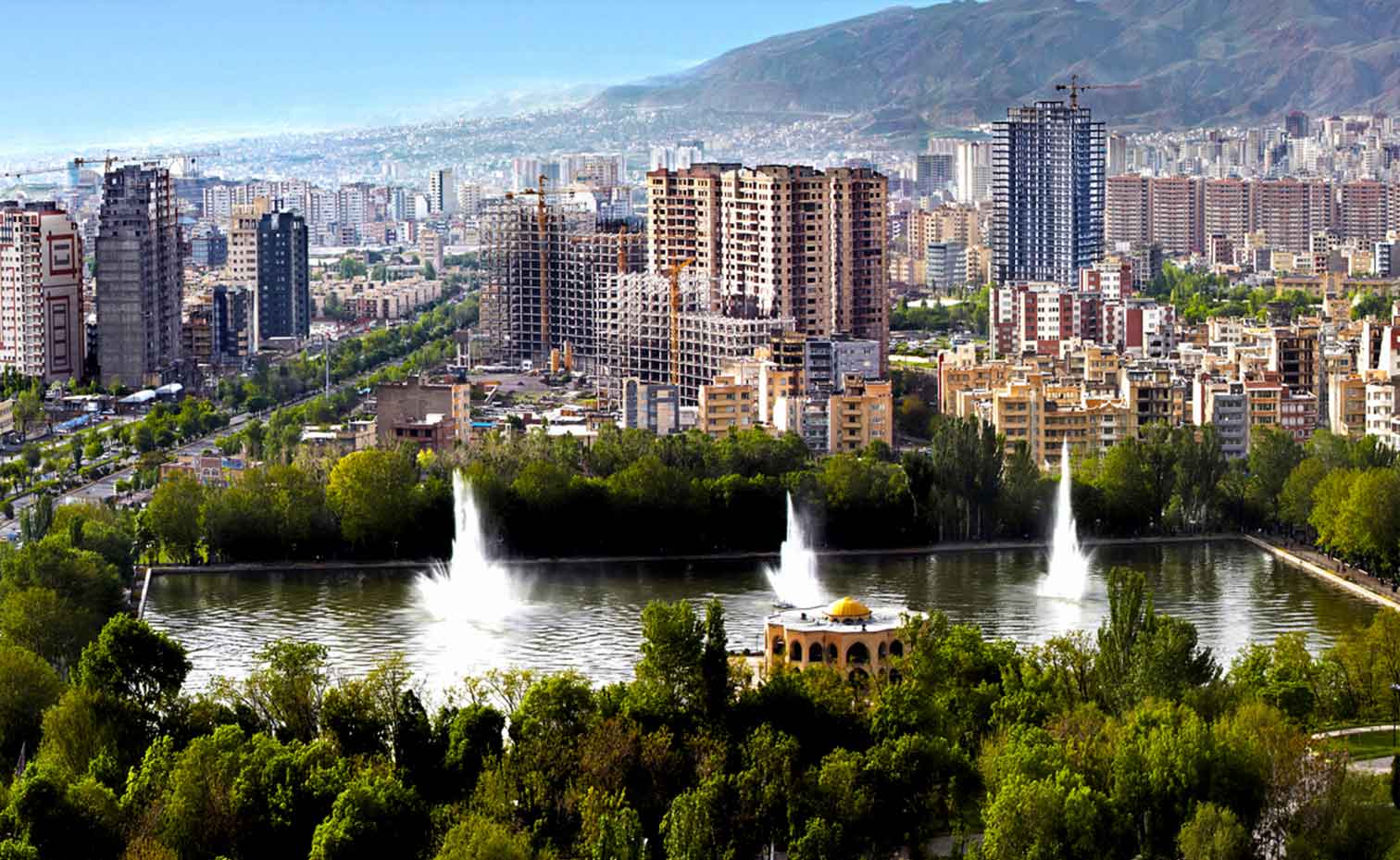


Tabriz Situated in the fastness of northwestern Iran, Tabriz is a historic city situated at the crossroads of Persia and the Caucasus and a is a classic stop along the famed Silk Road.
After the conquest of Iran by Muslims, the Arabic Azd tribe from Yemen resided in Tabriz. The development of post-Islamic Tabriz began as of this time. The Islamic geographer Yaqut says that Tabriz was a village before Rawwad from the tribe of Azd arrive at Tabriz. In 791 AD, Zubaidah, the wife of Abbasid caliph Harun al-Rashid, rebuilt Tabriz after a devastating earthquake and beautified the city so much as to obtain the credit for having been its founder. After the Mongol invasion, Tabriz came to eclipse Maragheh as the later Ilkhanid capital of Azerbaijan until it was sacked by Timur in 1392. Chosen as a capital by Abaqa Khan, fourth ruler of the Ilkhanate, for its favored location in the northwestern grasslands, in 1295, his successor Ghazan Khan made it the chief administrative center of an empire stretching from Anatolia to the Oxus River and from the Caucasus to the Indian Ocean. Under his rule, new walls were built around the city, and numerous public buildings, educational facilities, and caravansarais were erected to serve traders traveling on the ancient Silk Road. The ByzantineGregory Choniades is said to have served as the city’s Orthodox bishop during this time. In the 13th century, many western expediters visited Tabriz on their way to the east, all of them amazed by the richness of the city, its magnificent buildings, and institutions.Marco Polo who traveled through the silk road passed Tabriz about 1275 describe it as: “a great city surrounded by beautiful and pleasant gardens. It is excellently situated so the goods brought here from many regions. Latin merchants especially Genevis go there to buy the goods that come from foreign lands. During the Middle Ages, a Jewish community existed in the town. In the 16th century, a Jewish Yemenite traveler to the town described the deteriorating conditions of Jewish life there. From 1375 to 1468, Tabriz was the capital of Kara Koyunlu state in Azerbaijan, and from 1469to 1501 the capital of AkKoyunlu state. Some of the existing historical monuments including the Blue Mosque belong to the Kara Koyunlu period.
In 1501, Shah Ismail I entered Tabriz and proclaimed it the capital of his Safavid state. In 1514, after the Battle of Chaldiran, Tabriz was temporarily occupied by the Ottomans but remained the capital of Safavid Iranian empire until 1548, when Shah Tahmasp I transferred it to Qazvin to avoid the growing threat of Ottoman army. Between 1585 and 1603, Tabriz was occupied by the Ottomans but liberated by the Safavid king, Abbas I of Persia after which it grew as a major commercial center, conducting trade with the Ottoman Empire, Russia, central Asia, and India. In summer of 1721, a large earthquake shocked Tabriz killed about eighty thousands of its residents. The devastation continued later on 1724-1725 by the crucial invasion of the city by Ottoman army during which they imprisoned and killed of about two hundred thousands of Tabriz inhabitants. The city was retaken later by the Iranian army. In coming years widespread of the hunger and disease killed a number of the city residents. In 1780, a major earthquake hits near Tabriz killing over 200,000. The tragic devastation reduced the number of inhabitants to about thirty thousand and turned the city into a mere ghost’s town. At the end of the 18th century, the city was divided into several districts each of which was ruled by a family, until 1799 when Qajar Prince Abbas Mirza appointed as the governor of the city. During Qajar dynasty, the city was the residence of the Crown Prince during. The crown prince normally served as governor of Azerbaijan province as well. One of the most important events in this period was the war between Iran and Russia. With the last series of the Russian-Iranian wars, the city was captured by Russia in 1826. After signing the peace treaty the Russian army retreat from the city however the Russian political and military influence remained a major issue up to the fall of the Russian empire in the early 20th century. After the retreat of Russian army Abbas Mirza, Qajar prince of the crown started a modernization scheme launched from Tabriz. He introduced Western-style institutions, imported industrial machinery, installed the first regular postal service, and undertook military reforms in the
The best time to visit Tabriz will be when the average temperatures are at a comfortable level (between 20°C / 68.0°F and 30°C / 86.0°F on average) which is during months June, July, August and September. Other great months to visit Tabriz are April, May, and October when the average temperatures are a little cooler but still between a pleasant 10°C / 50.0°F and 20°C / 68.0°F. If you don’t mind bringing a coat, you might also enjoy visiting Tabriz during March, November, and December but average temperatures are fairly cool (between 0°C / 32.0°F and 10°C / 50.0°F).
East Azerbaijan province of Iran is one of the centers of handicrafts. In the province of carpets, rugs, woolen cloth, saddlebags, carpets, shawls, Glymchh, pottery and ceramics, all kinds of wicker baskets, woolen cloth and silk, embroidery, silver making, knitting, towel, shoes and shoe and crafts make up the major items.
East Azerbaijan Province, Tabriz, Imam Khomeyni, 45 Km Route, Tabriz-Marand Rd, Iran
Total: 8 hotels . Showing 1 - 8 view all
Not what you're looking for? Try your search again
Total: 3 tours . Showing 1 - 3 view all
Not what you're looking for? Try your search again
Click me below to chat on WhatsApp or send us an email to info@whypersia.com